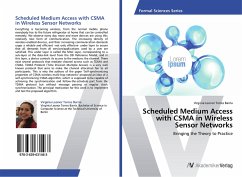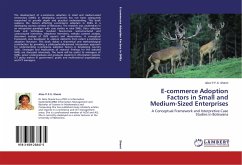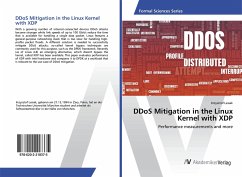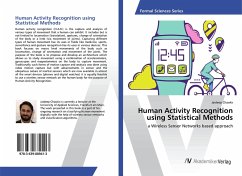
Scheduled Medium Access with CSMA in Wireless Sensor Networks
Bringing the Theory to Practice
Versandkostenfrei!
Versandfertig in 6-10 Tagen
27,99 €
inkl. MwSt.

PAYBACK Punkte
14 °P sammeln!
Everything is becoming wireless, from the normal mobile phone everybody has to the future refrigerator at home that can be controlled remotely. We observe every day more and more devices are using this relatively new form of communication. The increasing density of wireless-enabled devices, and their increasing communication demands urges a reliable and efficient -not only effective- under layer to assure that all demands from all services/applications used by a user are satisfied. This under layer is called the MAC layer, corresponding to a sub-layer at the data-link level from the OSI Refere...
Everything is becoming wireless, from the normal mobile phone everybody has to the future refrigerator at home that can be controlled remotely. We observe every day more and more devices are using this relatively new form of communication. The increasing density of wireless-enabled devices, and their increasing communication demands urges a reliable and efficient -not only effective- under layer to assure that all demands from all services/applications used by a user are satisfied. This under layer is called the MAC layer, corresponding to a sub-layer at the data-link level from the OSI Reference Model, and in this layer, a device controls its access to the medium; the channel. There exist several protocols that mediate channel access such as TDMA and CSMA. TDMA Protocol (Time Division Multiple Access) is a very well known protocol that aims to make the channel allocation fair to all participants. This is why the authors of the paper "Self-synchronizing properties of CSMA wireless multi-hop networks" proposed an idea of a self-synchronizing CSMA algorithm, which is supposed to be capable of achieving the synchronization and follow-the-schedule part from the TDMA protocol but without message passing or regular clock synchronization. The principal motivation for this work is to implement and test the proposed algorithm.












